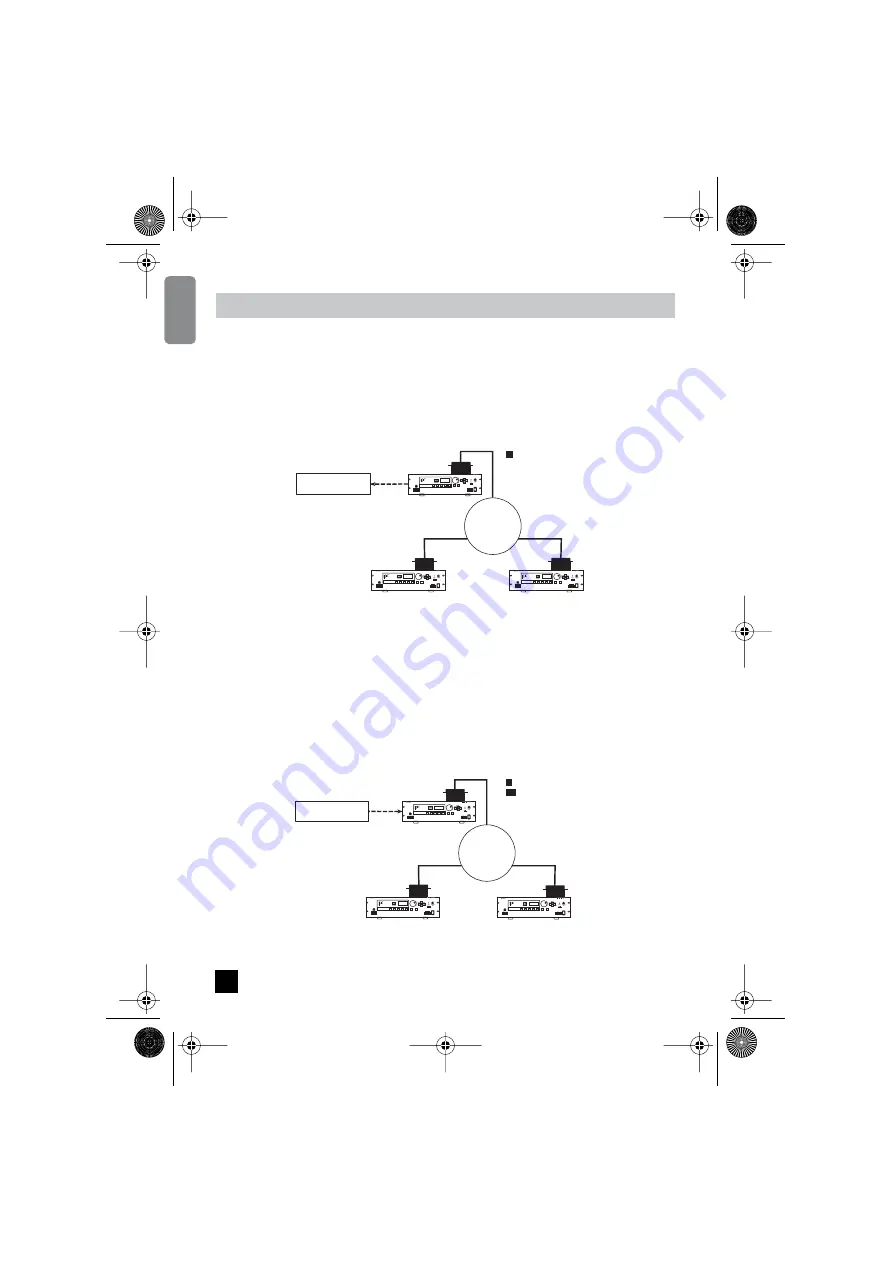
12
MY16-C
Owner’s Manual
ENGLISH
The MY16-C provides a selection of three clock synchronization modes: Network synchronization,
host synchronization 1, and host synchronization 2.
Network Synchronization
In this mode the MY16-C receives synchronization from the network. This is the normal
synchronization mode. When the MY16-C is set to network synchronization, make sure that the
audio device in which the MY16-C is installed is synchronized to the MY16-C clock.
Host Synchronization 1
Use this mode if the device in which the MY16-C is installed is synchronized to a clock signal other
than the CobraNet clock. When the Host Synchronization 1 mode is selected the MY16-C receives
synchronization from the device in which it is installed (the "host"), and that clock signal is then
supplied to the network. When the host Synchronization 1 mode is selected, make sure that the
host device is set to feed a clock signal to the MY16-C card.
n
When using the Host Synchronization 1 mode make sure that the frequency of the clock signal supplied to
the MY16-C is within ±50 ppm of 48 kHz or 96 kHz. Proper operation is not guaranteed with clock
frequencies outside this range, and problems with noise or instability may be encountered.
Clock Synchronization Modes
Network
N
N
N
Clock
DME64N/24N
,
PM5D etc
DME64N/24N
,
PM5D etc
DME64N/24N
,
PM5D etc
MY16-C
MY16-C
MY16-C
N
:
Network Synchronization
Non-network Device
An example of network synchronization
H1
N
N
MY16-C
MY16-C
MY16-C
N
: Network Synchronization
H1
: Host Synchronization 1
Clock
Non-network Device
Network
DME64N/24N
,
PM5D etc
DME64N/24N
,
PM5D etc
DME64N/24N
,
PM5D etc
Examples of host synchronization 1
a.
10
MY16-C_E.book Page 12 Tuesday, April 13, 2004 7:32 PM






































